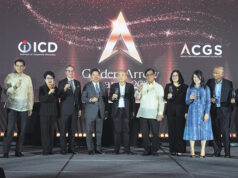The explosive opportunity of Philippine eSports
By Bjorn Biel M. Beltran, Special Features Writer
Until very recently, the idea that anyone can make a living by playing video games has been nothing but a pipe dream. Nowadays, with the explosive popularity of competitive video games like League of Legends, Dota 2, Counterstrike: Global Offensive, and even mobile games like Mobile Legends: Bang Bang, and Arena of Valor, not only is it possible, but anyone can make bank just by playing, provided they have the skill and dedication.
Competitive video games, or eSports, have become a multimillion-dollar business. Moreover, this year, global eSports revenues are predicted to hit $1.1 billion, reportedly growing by 27% from 2018 due to skyrocketing revenues from advertising, sponsorship and media rights to competitive video gaming.
Much of this boom is attributable to the mainstream marketable appeal of eSports. Brand investments through advertising, sponsorship and media rights are expected to make up 82%, or around $897 million of the total revenues, nearly triple that of the brand support recorded in 2015, according to a report by Newzoo, a gaming industry analytics firm.
In addition, eSports audiences — comprised of both enthusiasts and occasional viewers — are expected to grow 15% to 454 million. By 2022, total global eSports revenues could be $1.8 billion.
 In the Philippines, this growth is easily noticeable. Video games have broken onto mainstream social media platforms like Facebook. Celebrity streamers and professional gamers with thousands of followers play video games like Mobile Legends on live video streams. And with the launch of the ongoing inaugural season of The Nationals, the first franchise-based electronic sports league in the Philippines, sponsored by the MVP Group of Companies, eSports as a billion-peso industry is starting to take shape.
In the Philippines, this growth is easily noticeable. Video games have broken onto mainstream social media platforms like Facebook. Celebrity streamers and professional gamers with thousands of followers play video games like Mobile Legends on live video streams. And with the launch of the ongoing inaugural season of The Nationals, the first franchise-based electronic sports league in the Philippines, sponsored by the MVP Group of Companies, eSports as a billion-peso industry is starting to take shape.
It is the culmination of the momentum that eSports has been seeing since the start of the decade. Despite the prevalence of video games in the country’s countless computer shops and Internet cafes, the eSports scene in the Philippines was primarily amateur in nature, held and funded by local Internet café owners and franchises. While eSports associations like the Major League Gaming or the Electronic Sports World Convention abroad were gaining influence in the 2000s, lack of funding, investment, or infrastructure hindered Philippine eSports from truly blossoming until recently.
Part of the reason for its slow adoption could also be attributed to the social stigma of video games in general. Video games, at the time, were seen as merely an unproductive pastime for children and teens. Multiple reports of teenagers getting addicted to video games, compromising their studies, responsibilities, and even their health, further exacerbated negative public opinion.
The fact that many students were spending countless hours in computer shops to play video games lends a semblance of credibility to such negative views on gaming. According to an exploratory study published in the International Journal of Cyber Society and Education in 2012, 73% of Internet cafe customers in Manila were found to be students.
The study, titled “Pattern of Internet Usage in Cyber Cafes in Manila,” found that 72% of those surveyed had attained or were pursuing a college degree, and 20% had finished or were still in high school. Presumably, a number of such students were playing video games at the expense of their studies.
Even today, that stigma persists.
“For now, the main challenge is educating everyone that eSports is becoming an actual sport,” Marlon Marcelo, country manager of MET Events, the event-organizing arm of Mineski Corporation, the largest eSports organization in Southeast Asia, told BusinessWorld in a previous report.
The Mineski Corporation has been an avid proponent of responsible gaming since its inception, holding grassroots tournaments in its Mineski Infinity cybercafes since its beginnings in the early 2000s, with the company also being one of the first to sponsor a professional eSports team in the country.
“You can be successful and be a gamer at the same time. It doesn’t mean that if you’re a gamer, you’re a loser or an addict, or you’re not successful in life. That is a very big misconception. Gaming is not equivalent to addiction, and gaming can be done right,” Mr. Marcelo said.
As companies like Mineski grew, proving the business potential of the industry, so did the fame of Filipino gamers in the eSports world. TNC Predator, the professional gaming team of Philippine net cafe chain TheNet.Com, placed first in the Southeast Asia Qualifiers at the 2016 season of the Dota 2 tournament, The International, the first Philippine team to do so since Mineski in 2011. More recently, they took home top prize at the World Electronic Sports Games (WESG) 2018 in March 2019 in Chongqing, China.
Securing its legitimacy as an officially recognized sport, the Philippine Games and Amusement Board (GAB), under the Office of the President, allowed professional eSports players to secure athletic licenses in 2017, which gave eSports players more freedom to participate in international tournaments to represent the country.
With the 30th SEA Games this year, which the Philippines will be hosting this November, including six eSports titles as medal events, and the talks of eSports becoming official medal sport for the 2022 Asian Games, there is no telling how bright the future of eSports in the Philippines can be. The only thing that can be certain is that this is just the beginning.


